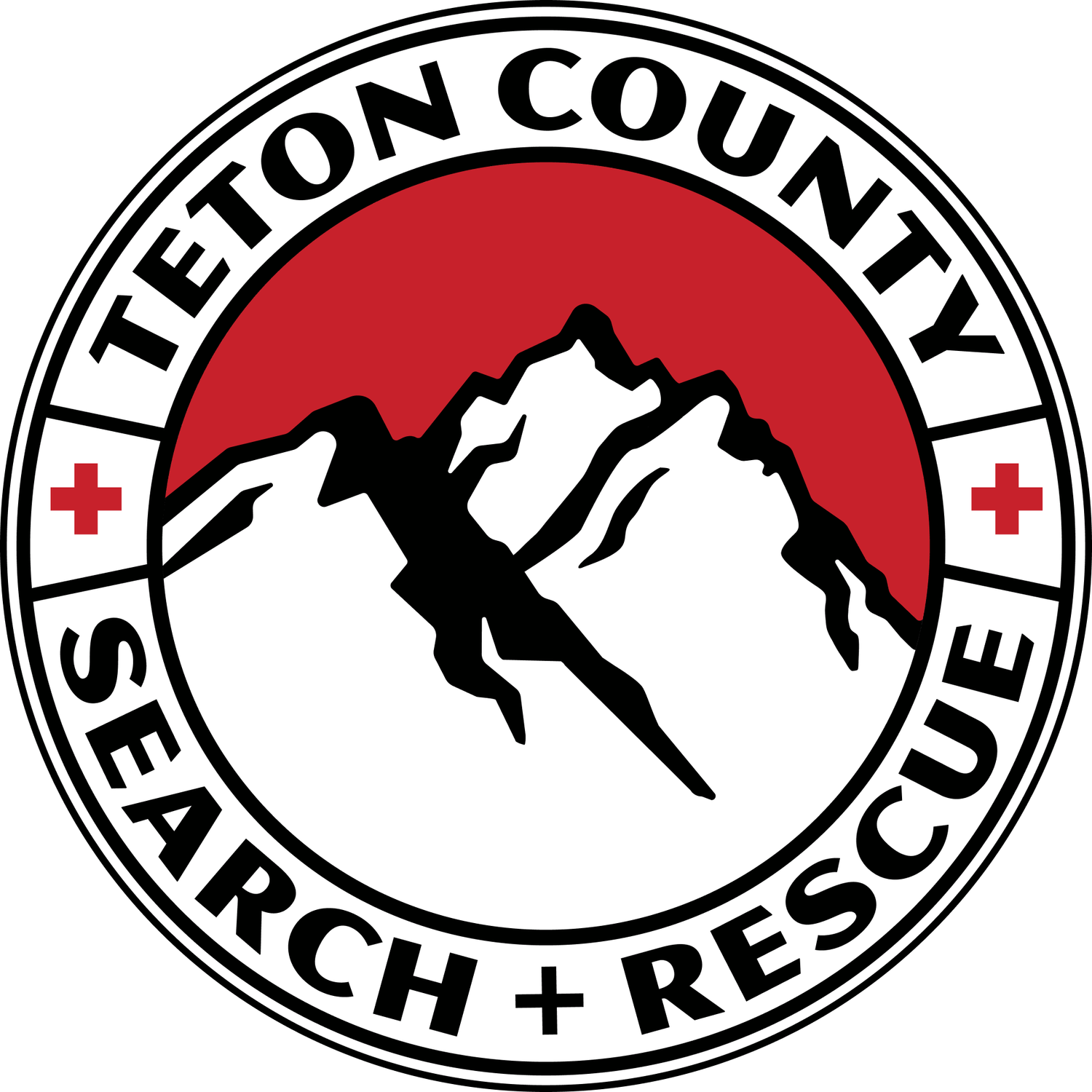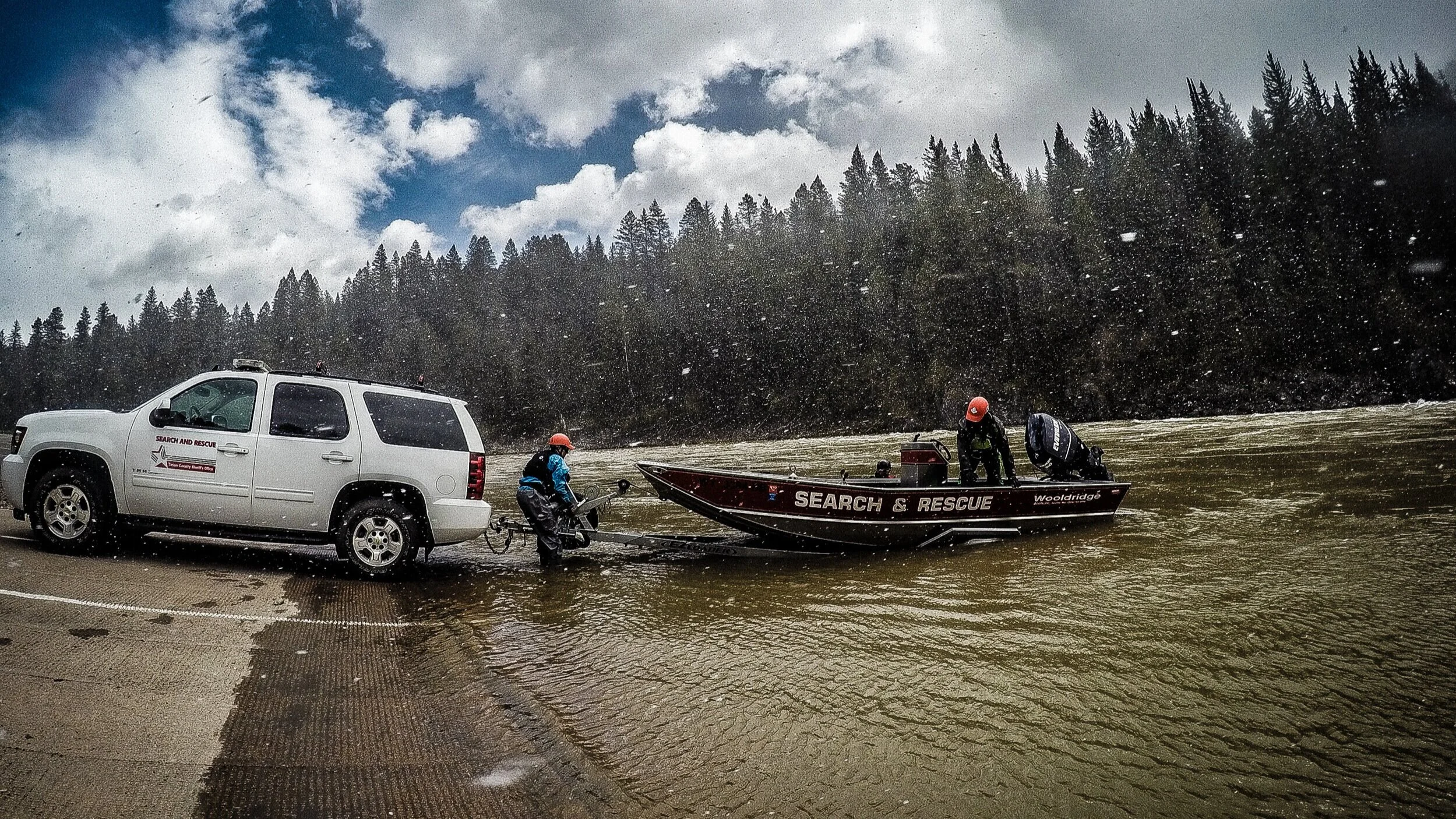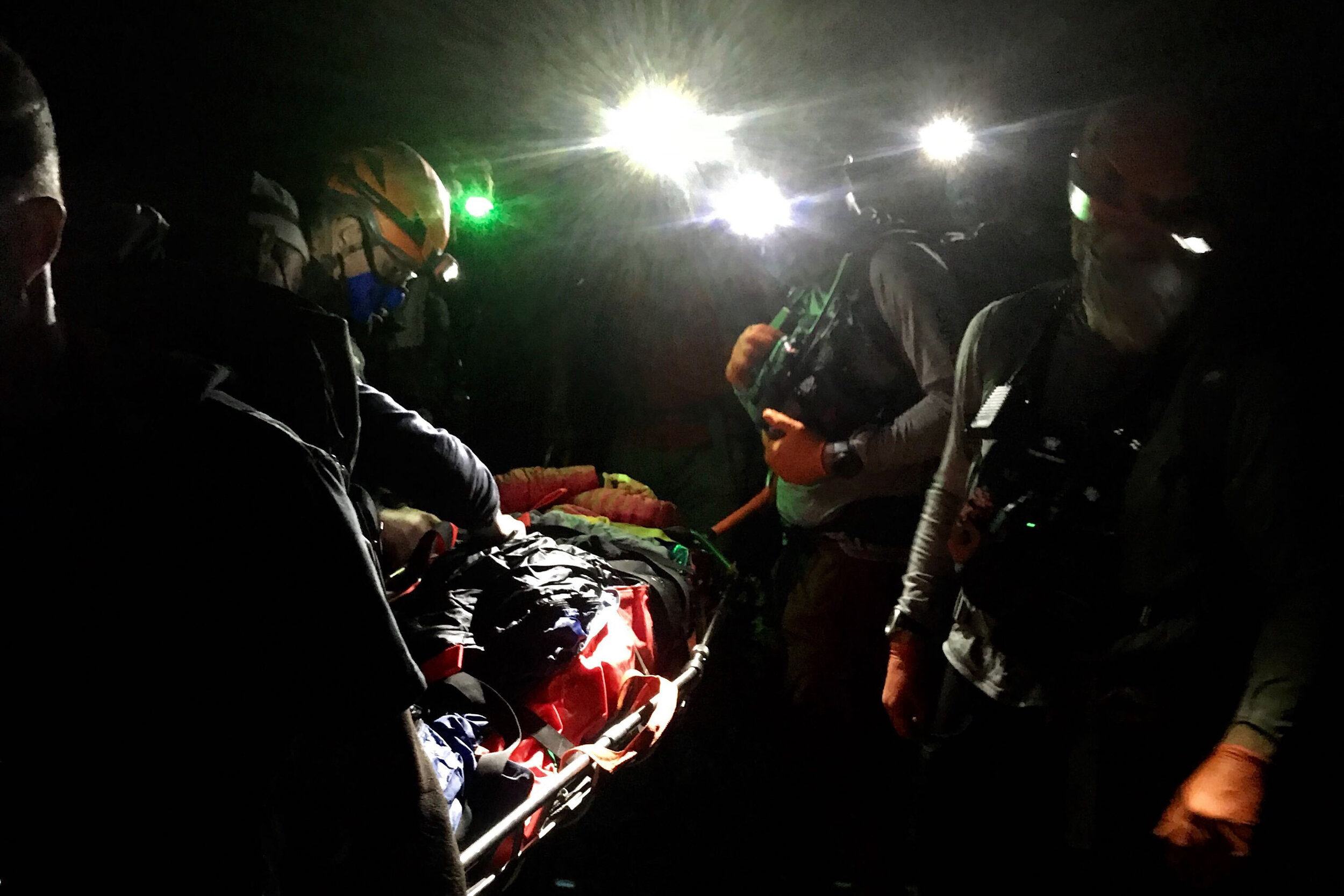Thirty feet down inside a dark, icy crevasse, Tyler Willis never gave up hope that he would be rescued. That he was eventually pulled from the depths of the Teton Glacier by his climbing partner and two passersby after more than an hour of rope rigging is testament to the value of companion rescue.
The harrowing tale from August 8, 2020, when Willis fell into a hole in the glacier after summiting Mount Owen, is the newest episode on The Fine Line, the podcast from Backcountry Zero and Teton County Search and Rescue Foundation.
Tyler Willis receives emergency care from Grand Teton National Park climbing rangers after being pulled from a crevasse in the Teton Glacier, in this photo from Sunday, August 9, 2020. Photo: Courtesy Ryan Stolp
Willis, a 34-year-old climber and educator from Evanston, Wyo., shares his story with host Rebecca Huntington. The two-part episode includes the sharp perspective of Ryan Stolp, a Jackson climber who happened to come across the accident site after also summiting Mount Owen and proved to be instrumental in saving Willis’s life. The third person in the interview is Mike Shain, a Jenny Lake climbing ranger who helped bring Willis off the mountain.
Part 1 of the episode airs at 2 p.m. on KHOL 89.1 FM on Thursday, December 17, with Part 2 airing at the same time on December 24. Both episodes will also be available via download on Apple, SoundCloud, and Spotify. Subscribe today so you never miss an episode.






